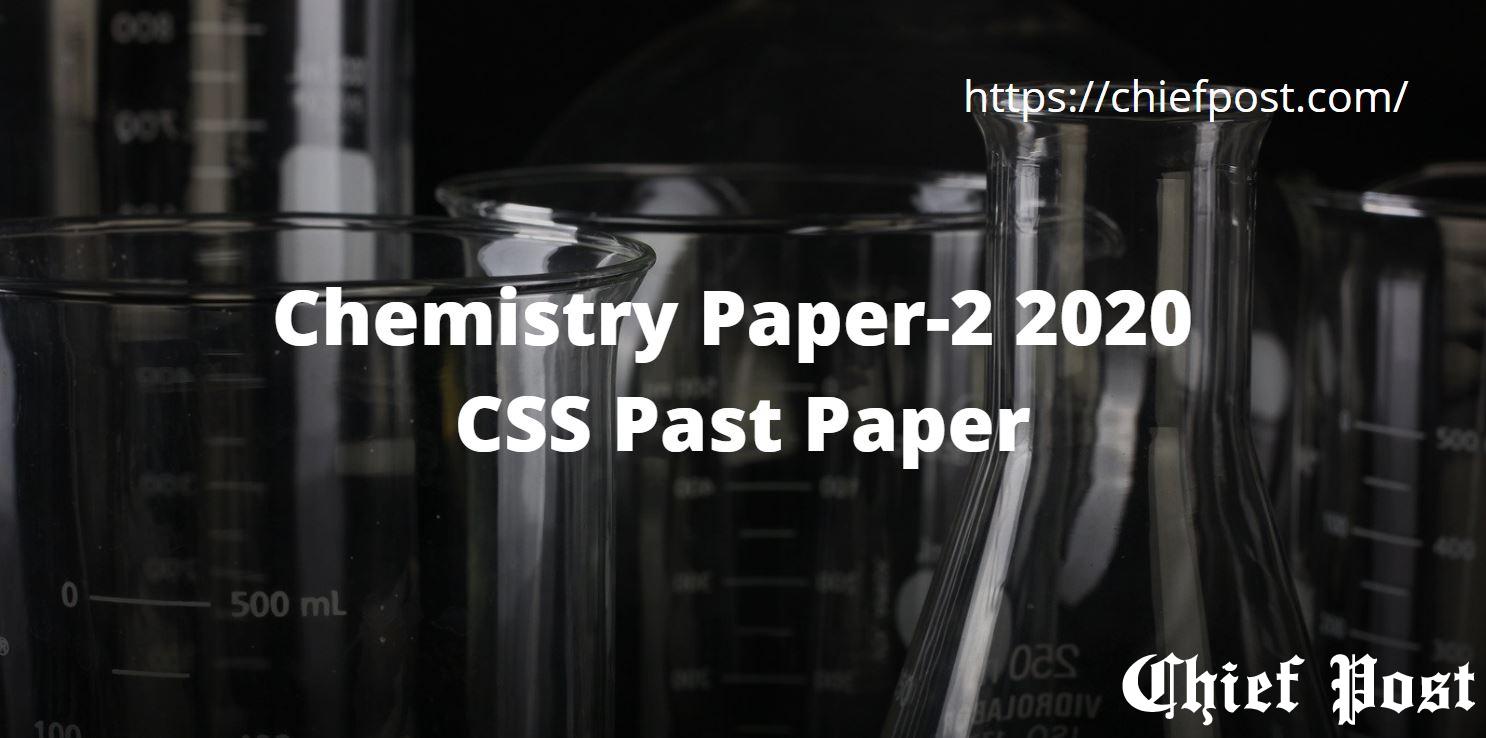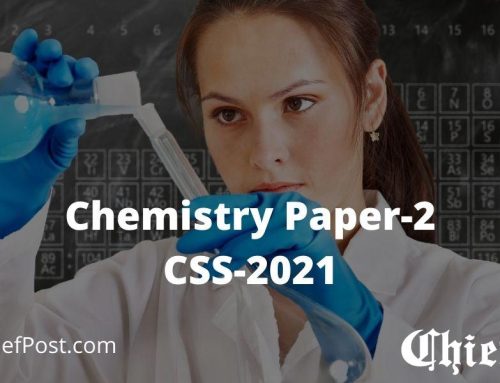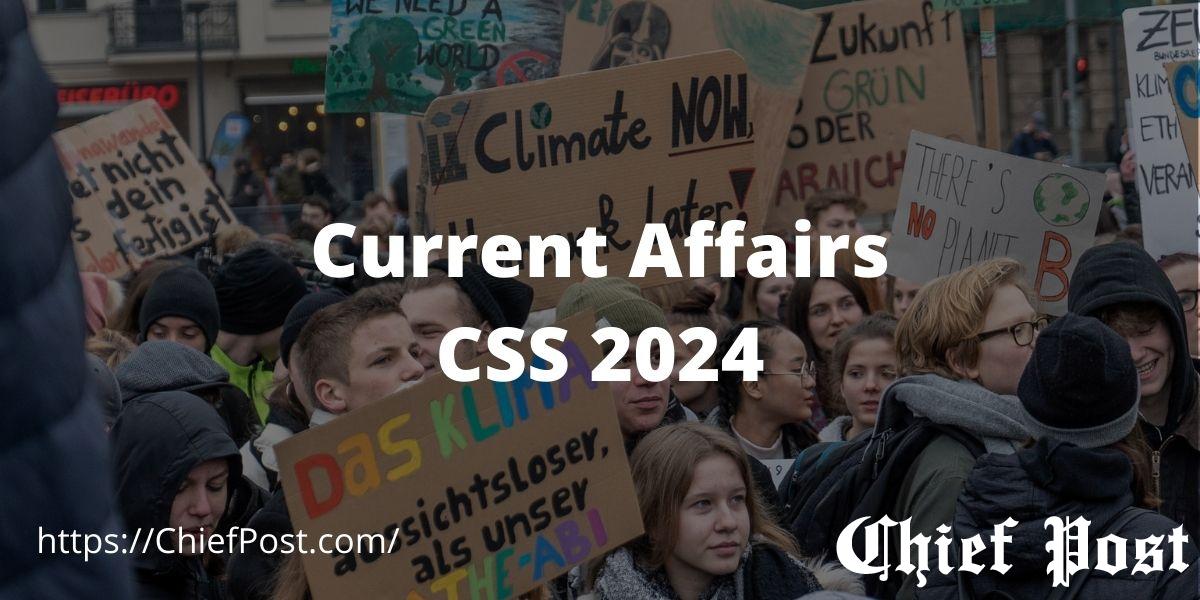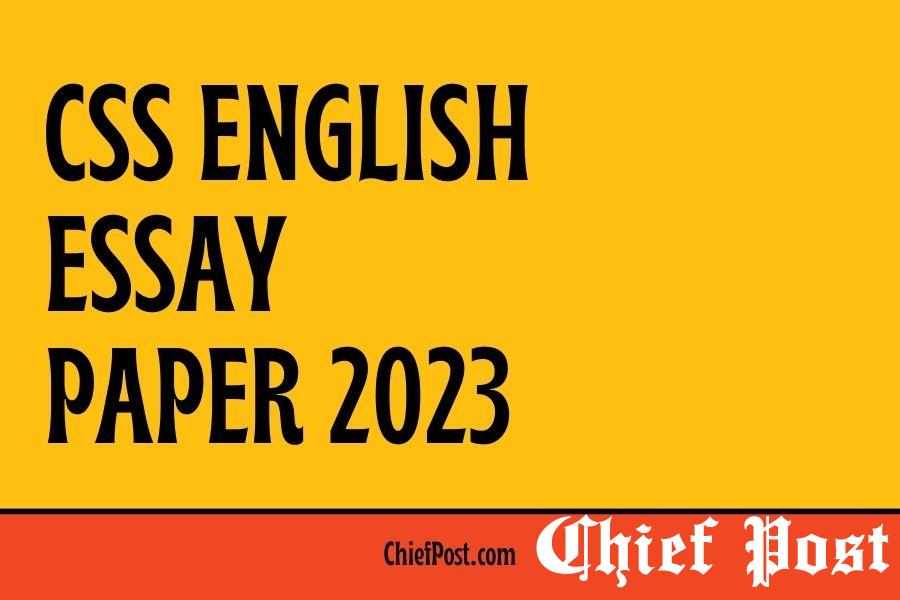
Chemistry Paper-2 2020 — CSS Past Paper
FEDERAL PUBLIC SERVICE COMMISSION
COMPETITIVE EXAMINATION-2020 FOR RECRUITMENT TO POSTS IN BS-17
UNDER THE FEDERAL GOVERNMENT
CHEMISTRY, Paper-2
TIME ALLOWED: THREE HOURS
PART-I(MCQS): MAXIMUM 30 MINUTES
PART-I (MCQS) MAXIMUM MARKS = 20
PART-II MAXIMUM MARKS = 80
NOTE:
- (i) Part-II is to be attempted on the separate Answer Book.
- (ii) Attempt ONLY FOUR questions from PART-II. ALL questions carry EQUAL marks.
- (iii) All the parts (if any) of each Question must be attempted at one place instead of at different places.
- (iv) Candidate must write Q. No. in the Answer Book in accordance with Q. No. in the Q.Paper.
- (v) No Page/Space be left blank between the answers. All the blank pages of Answer Book must be crossed.
- (vi) Extra attempt of any question or any part of the attempted question will not be considered.
PART-II
Q.No. 2. Explain the difference between: (5 each) (20)
- (i) Inductive and Field effects
- (ii) Inductive and Resonance effects
- (iii) Localized and Delocalized bonding
- (iv) Conjugation and Hyperconjugation
Q.No. 3.
- (a) “ The resonance effect has an appreciable influence on physical characteristics and the chemical reactivity of organic molecules”. Elaborate the statement with the help of examples. (10)
- (b) Outline the EAS mechanism (Electrophilic Aromatic Substitution) through which aromatic compounds react with electrophiles. (5)
- (c) Discuss factors which favour an elimination reaction occurring over a substitution reaction. (5) (20)
Q.No. 4. How would you carry out the following conversions? Account for your answer with (4 each) (20)
mechanism in each case.
- (i) (CH3)3CCH=CH2 — (CH3)2C(OH)CH(CHs)2
- (ii) (CH3)3CCH=CH2 — (CH3)3CCH(OH)CH3
- (ii) (CH3)3CCH=CH2 — (CH3)3CCH2CH2OH
- (iv) (CH3)3CC=CH — (CH3)3;CCOCH3
- (v) (CH3)3CC=CH — (CH3)3CCH2CHO
Q.No. 5. The following reactions can be used for the preparation of alkanes or cycloalkanes. (5 each) (20)
Elaborate them with the help of reaction mechanisms.
- (i) Corey House reaction
- (ii) Wurtz reaction
- (iii) Kolbe reaction
- (iv) Simmons – Smith Reaction
Q.No. 6. How would you convert cyclohexanone into the following compounds? Write (4 each) (20)
down the mechanisms of the reactions.
- (a) Caprolactone
- (b) Caprolactam
- (C) Cycloheptanone
- (d) Cyclohexa-1,2-dione
- (f) Cyclohexane
Q.No. 7.
- (a) How cana racemic mixture be separated into its components? Describe different methods. (16)
- (b) (-)-Lactic acid has a specific rotation of — 3.8°. What will be the specific rotation of a (4) (20)
solution containing 7.5g of (-)-lactic acid and 2.5 g of (+)-lactic acid?
Q.No. 8.
- (a) Starch, glycogen and cellulose are polymers of glucose. How will you differentiate among (12)
these three both structurally and functionally. - (b) Explain precisely the following terms. (8) (20)
- (i) Glycolysis
- (ii) Glycogenolysis
- (iii) Glycogenesis _
- (iv) gluconeogenesis
**********










